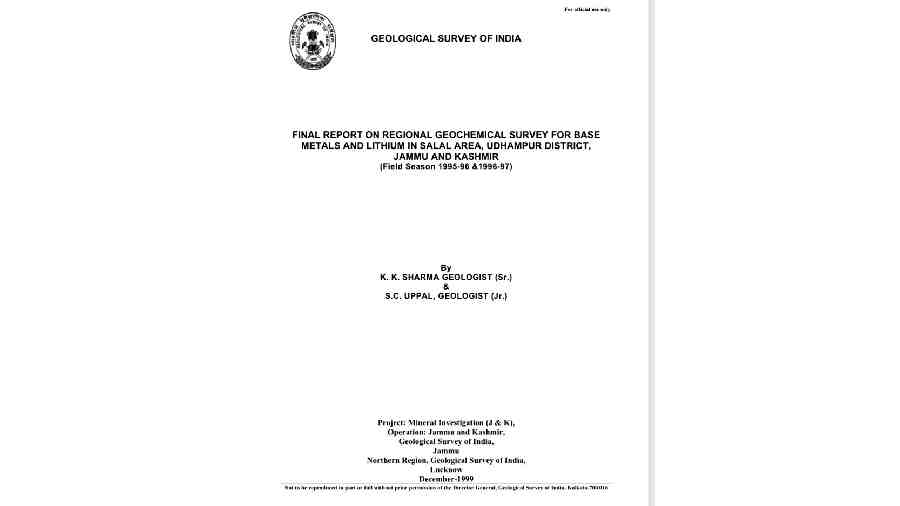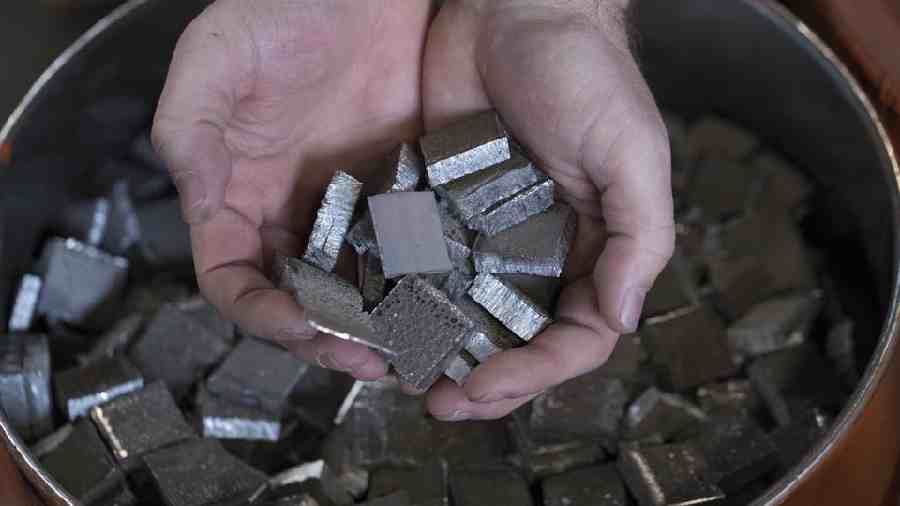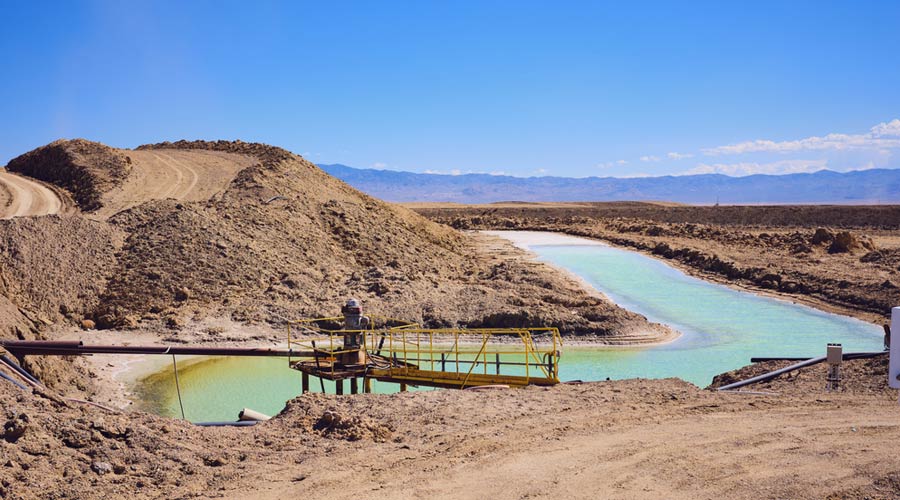Indian geologists had spotted promising signs of lithium reserves in Jammu’s Reasi district and proposed further exploratory work there over a quarter century before the Union ministry of mines announcement on Thursday of an inferred estimate of 5.9 million tonnes.
A 67-page report prepared in 1999 by GSI scientists K.K. Sharma and S.C. Uppal had said “the prospect of lithium appears to be promising” in the Reasi belt, flagging high values of lithium “persistent throughout the belt”.
Titled “Final report on Regional Geochemical Survey for Base Metals and Lithium in Salal Area... Field Session 1995-96 and 1996-97”, it had also credited M.R. Kalsotra, the then director for mineral investigation operations, for carrying out trace studies and reporting “high values of lithium” in 1992.

A screenshot of the 1999 report
On Thursday, the Union ministry of mines had said the GSI had “for the first time” established 5.9 million tonnes of inferred reserves of lithium in the Salal-Haimana area of Reasi.
Lithium is a strategic mineral widely used in batteries for electric vehicles, mobile phones and computers and has a growing demand worldwide.
Scientists say 5.9 million tonnes — if verified through future studies and if determined as viable for economic extraction — would mean India has one of the largest reserves of this strategic mineral.
A US Geological Survey document on lithium has listed Bolivia with the largest reserve of 21 million tonnes, followed by Argentina (17 mt), Chile (9 mt), US (6.8 mt), Australia (6.3 mt) and China (4.5 mt).
The ministry of mines announcement through the Press Information Bureau said the inferred estimate of lithium had emerged through field investigations since 2018-19 that had also shown possible deposits of gold and other minerals in 11 states. The ministry did not mention the 1999 report by GSI scientists.
A scientist who requested not to be named said the 1999 report was the outcome of a geochemical mapping exercise to generate “baseline data on minerals” that had identified the Salal area as a promising site for future exploratory investigations.
The scientist said the new report submitted by the GSI would in all likelihood have referred to the 1999 contribution by the GSI scientists.
Union minister for coal and mines Pralhad Joshi had tweeted: “India’s First: In a boost to#AatmaNirbharBharat, 5.9 million tonnes inferred resources of lithium have been discovered for the first time in the country, in Reasi District of Jammu & Kashmir.”
Vivek Bharadwaj, the mines ministry secretary, confirmed to The Telegraph on Saturday that the “discovery had been made on the basis of the previous work by the GSI” which had “recommended further investigations”.
The geochemical mapping by Sharma and Uppal had analysed more than 200 samples in the Salal area and noted the presence of lithium in average concentrations of about 831 parts per million at some sites.
In view of the previous work and recommendations, an area of 5sqkm with drilling of 1,200 metres and sampling was proposed for the field season 2020-22, he said.
Pankaj Srivastava, a senior geologist at Jammu University, said the study by Sharma and Uppal raises the question why no detailed excavations were undertaken all these years despite the high concentrations of lithium detected there.
“Only the GSI can explain it. The lithium enrichment was high. I do not know why the study was not extended after 1999,” he said.
He, however, said he had not seen the latest GSI report which must have given credit to the “commendable” work done by earlier geologists.
A senior GSI scientist associated with the new inferred estimate declined to discuss the discovery. But scientists familiar with the development said the inferred estimate was from an early stage of exploration where the estimated abundance of a mineral comes with large error margins.
The inferred estimate comes from the so-called G3prospecting stage that aims toidentify sites of promising deposits for further exploration.The subsequent G2 phase will seek to obtain an initial estimate of size, shape and grade of the deposit.
Additional reporting by G.S. Mudur in New Delhi












